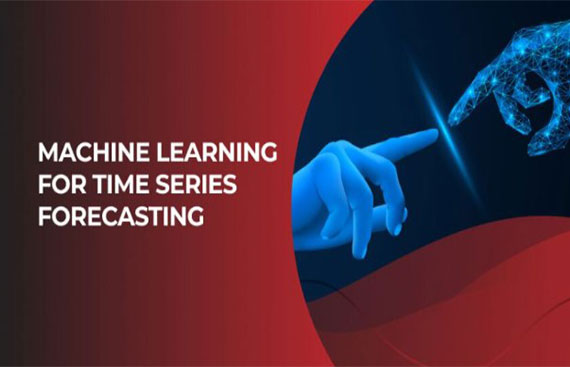Time Series Forecasting with Machine Learning

Businesses these days cannot survive by simply performing well. In the 21st Century, it is really important that organizations address competition to thrive in their respective industry. To address competition, it is important that businesses look into real-time data, analyze it, and then make informed business decisions. To do so, time series forecasting is something that comes in really handy without having to break heads over complex tools and methodologies. Further, time series forecasting has now been made even easier with the help of Machine Learning. In this article, let’s explore together what time series forecasting is and how machine learning helps to make it even easier for us. In this article, we will delve into the essence of time series forecasting and elucidate how the synergy between Machine Learning and vector search revolutionizes this indispensable practice.
What is Time Series Forecasting?
What do you understand by forecasting? Predicting the future, right? Time Series Forecasting is the exact same thing but for business data. When you observe past data and information to predict how these data points are going to vary in the future, that is known as time series forecasting. Time Series forecasting can help organizations plan well for their future needs. The way this forecasting is possible is by analyzing the underlying patterns in the data and predicting future values based on this historical trend of variables over time, hence it is called “time series” forecasting.
Key Components of Time Series Forecasting?
Before we jump on discussing the machine learning methodologies and techniques of studying time series, we need to understand what are the various components of time series data. It is on the basis of these components of time series that data scientists design their algorithms and reach conclusions to make informed business decisions.
Time Dependence
As the name suggests, time series data are data points that are highly dependent on the time factor. For two data models, the data points could be the same yet have completely different meanings and conclusions if they are against varied timestamps. One more thing to notice is that the time series data points are chronologically ordered, and there is a natural temporal ordering of observations.
Objective
It is very important to understand that while understanding the underlying patterns of a data series is needful to be able to predict values for the future, it is not the main objective of studying a time series data. The primary goal is to make predictions about future values rather than understanding the underlying structure or relationships in the data.
Temporal Patterns
Time series often exhibit patterns such as trends (long-term movements), seasonality (repeating patterns at regular intervals), and cycles.
Data Characteristics
Time series data can have noise, outliers, and missing values, making it essential to preprocess the data before applying forecasting models.
Data Preprocessing for Time Series
The way machine learning is always successful in delivering accurate results as compared to traditional techniques is by investing efforts and time in data preprocessing. It is only natural, to have some missing data in the data series when the data is so large. Data preprocessing makes sure that the missing data introduces negligible bias in the results. Not only this, data preprocessing is only necessary to deal with outliers and noise in data. Time Series decomposition is yet another needful step that is covered under data preprocessing as well.
Machine Learning Models for Time Series Forecasting
Too much beating around the bush, yeah? Now, it’s time for the real talk, how does machine learning contribute to studying time series forecasting? Machine Learning has dedicated models to work around time series forecasting. Let’s have a look at these machine-learning models one by one.
Regression-based models
Regressions-based models are machine learning models that work on predicting future values for a trend by simply using one or more predictor variables. In the context of time series forecasting, regression models can be applied to predict the future values of a time-dependent variable. Here are some commonly used regression-based models:
Linear Regression
- Simple Linear Regression: Predicts the target variable as a linear combination of one predictor variable.
- Multiple Linear Regression: Extends linear regression to multiple predictor variables.
Lasso Regression
- Lasso (Least Absolute Shrinkage and Selection Operator) adds a penalty term to the linear regression objective function, encouraging sparsity in the coefficients.
Ridge Regression
- Ridge regression also adds a penalty term to the linear regression objective function but uses the L2 norm, helping prevent multicollinearity.
Decision Trees
As the name suggests, decision trees are a technique to reach a decision by listing down all the possibilities in a tree structure. A Decision Tree is a tree-like model where each node represents a decision based on the value of a particular feature. It's a supervised machine-learning algorithm used for both classification and regression tasks.
Decision Trees are the way to go for many because of how easy their implementation is. The visualization they provide about the various possibilities for future value also makes them more likable in the industry. With decision trees, you can always make sure you reach the best decision.
Random Forests
Another Machine Learning technique to deal with time series forecasting is random forests. A Random Forest is an ensemble learning method that builds a multitude of decision trees and merges their predictions. Each tree in the forest is built independently by training on a random subset of the data (bootstrap samples) and considering a random subset of features at each split. The final prediction is typically an average (for regression) or a majority vote (for classification) of the individual tree predictions.
Time Series Forecasting in Python or R
It won’t be sensible to not machine programming languages by which you can implement time series forecasting if we are talking about the contribution of machine learning in the same. Two programming languages that are the most prominent when it comes to machine learning are, Python and R. The reason why it is so is that with Python and R, you get hold of very useful and popular libraries that help you in achieving time series forecasting and making informed business decisions. TensorFlow, PyTorch, scikit-learn, statsmodels are some of those popular libraries in Python and R.
Read More News :
India's first NFT Poetess - Harsha Saxena - Journey of an Entrepreneur to Poet
Anil Agarwal's Vedanta selects Ajay Goel as chief financial officer



